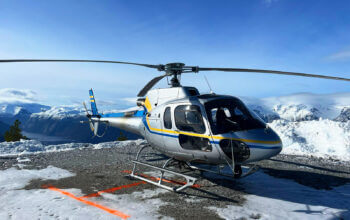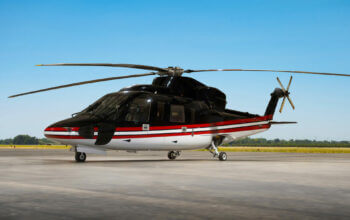Estimated reading time 3 minutes, 59 seconds.
As the unmanned aircraft systems (UAS) market continues to proliferate in a variety of fields including commercial, firefighting, law enforcement, and more, the need for maintenance and repair of the aircraft is also expanding.
One company addressing this is RoboticSkies. Skies met with technical account manager James Callaway to discuss what the company is bringing to the UAS industry.
“We are a maintenance and overhaul repair facility. We partner with other Part 145 repair stations across the U.S. and around the world,” Callaway explained. “We have 150 service centers within the U.S. and 100 equivalents outside of the country.”
RoboticSkies personnel receive training and repair guidance directly from the various drone manufacturers and then distribute that knowledge to their global network.
“This service allows operators to not only save money but time, as well. It cuts down on repair time because they can simply drop off their UAS and get it fixed. This saves money in shipping costs by not having to send the product back to the manufacturer, but it also saves money in lost productivity by having the UAS out for repairs for an extended time.”
Callaway believes that RoboticSkies is unique in the service they are offering. When asked how operators who don’t use their service are handling repairs, he said: “Some companies are buying throw-away drones so if it breaks, they just buy another. Or, they pay for exchange programs from the builder who rents them a similar model until the damaged one is fixed. Neither of these options is the best financially or operationally.”
This holds particularly true for larger, more capable models that can cost in the tens of thousands of dollars.
Technical account manager Trever Baker gave an example of how their service works.
“In the Phoenix, Arizona area, Walmart is already doing drone delivery of products. The models they use are quite expensive. So, if one of their drones has an issue, they can simply take it to one of our 145 repair stations, located nearby in Tempe. We facilitate the repairs through our base operations in Salt Lake City, Utah. The operator schedules the maintenance, we check availability for the service, create the work order, provide a quote, and then the authorized service center completes the maintenance.”
Callaway added that for their global network, they identify a 145 equivalent center then they will send RoboticSkies personnel to onsite train the maintainers then UAS in need of repair will start funneling through that facility.
“They are their own autonomous repair station they just facilitate our services on the drones. The UAS needs to be in the air to make money for the operator and that is what we help them do. And we are simplifying the process by providing a single point of contact.”
More information can be found at www.roboticskies.com








